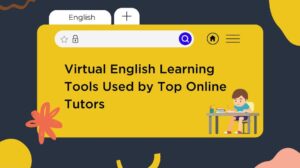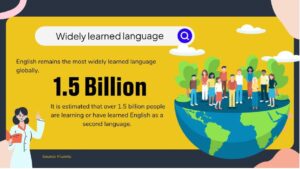
In today’s digital age, online English tutoring has emerged as a game-changer, empowering learners worldwide to improve their language skills from the comfort of their homes or anywhere with an internet connection. As the demand for virtual learning soars, top online tutors are harnessing the power of cutting-edge tools to deliver engaging, personalized, and effective English language instruction.
These innovative platforms are revolutionizing the way we approach language acquisition, offering interactive, multimedia-rich experiences that cater to diverse learning styles and proficiency levels.
Key Trends in Online English Tutoring
The online tutoring landscape has undergone a remarkable transformation, driven by technological advancements and changing educational needs. One significant trend is the rise of specialized courses and short-term learning modules tailored to specific goals, such as exam preparation or business English proficiency. Moreover, the integration of advanced technologies such as virtual reality (VR) and mobile applications has opened up new avenues for immersive, on-the-go learning experiences.
Additionally, the increasing globalization of the workforce has fueled the demand for effective online English learning solutions. As companies expand their operations across borders, the need for employees with strong English communication skills becomes paramount. This has led to a surge in corporate language training programs that leverage virtual tools to provide convenient and accessible English instruction to employees worldwide. Top Online English tutors and educational institutions are partnering with businesses to offer customized, industry-specific language courses that align with companies’ needs and objectives.
Top Virtual Tools for English Learning
Coursera and Perfectly Spoken
Platforms like Coursera and Perfectly Spoken offer comprehensive English language courses with a variety of teaching aids to cater to different learning preferences. From video lectures and interactive quizzes to specialized tracks for exams like TOEFL and IELTS, these platforms provide a well-rounded learning experience.
WizIQ and TutorCruncher
WizIQ and TutorCruncher, virtual classrooms, facilitate real-time online tutoring sessions. These platforms offer extensive functionalities, including interactive whiteboards, screen-sharing capabilities, and comprehensive course management features tailored for both tutors and learners.
These tools enable tutors to create engaging, multimedia-rich lessons and provide personalized feedback and support to their students, fostering a collaborative and dynamic learning environment.

Source: Fluentu
Innovative AI Tools in English Language Learning
The integration of artificial intelligence (AI) has opened up new frontiers in language learning, offering personalized, adaptive, and engaging experiences.
ChatLingo and Talkio AI
ChatLingo and Talkio AI are AI-driven platforms that provide conversational practice and personalized tutoring sessions to improve language skills. These tools leverage natural language processing (NLP) and machine learning algorithms to analyze users’ responses, identify areas for improvement, and offer tailored feedback and exercises.
By simulating real-world conversations and adapting to individual needs, these AI tools offer a convenient and efficient way to enhance fluency, vocabulary, and comprehension.
Job Interview AI
A study by the British Council found that 3 out of 4 English learners globally target B2 or higher fluency, for professional and academic use. For those seeking to excel in professional settings, tools like Job Interview AI specialize in niche areas like job interview preparation, enhancing both general and business English proficiency. These AI-powered platforms provide mock interviews, targeted feedback, and industry-specific language training, equipping users with the skills to communicate effectively in a professional context.
Integration of Social and Emotional Learning
While language proficiency is paramount, effective communication also relies on social and emotional competencies. Top online tutors recognize this need and are integrating task-based learning and translanguaging strategies into their virtual English learning tools.
Task-based learning involves role-playing real-world scenarios, fostering the practical application of language skills, and promoting critical thinking. Translanguaging, on the other hand, encourages learners to draw upon their entire linguistic repertoire, bridging the gap between their native language and English.
By incorporating these approaches, virtual tools aim to enhance engagement, cultural awareness, and the ability to navigate diverse social contexts, ultimately preparing learners for successful cross-cultural communication.
Evaluating the Effectiveness of Virtual English Learning Tools
To ensure learners are making measurable progress, platforms like LingQ and EnglishClass101 offer robust progress tracking and performance evaluation tools. These tools leverage data analytics and adaptive learning algorithms to identify areas of strength and weakness, providing personalized recommendations and tailoring the learning experience accordingly.
Furthermore, these platforms offer immersive learning experiences through podcasts, audiobooks, and interactive content, allowing learners to practice their listening and comprehension skills in a diverse range of contexts.
By continuously evaluating learners’ progress and adjusting the curriculum, these tools ensure that the learning journey remains engaging, challenging, and effective.
Gamification and Adaptive Learning in Virtual English Tools
One of the most exciting developments in virtual English learning tools is the integration of gamification and adaptive learning techniques. By incorporating game-like elements such as points, badges, leaderboards, and interactive challenges, these tools make the learning process more engaging and motivating.
Platforms like Duolingo and Babbel have pioneered the use of gamification in language learning, offering bite-sized lessons, colorful interfaces, and instant feedback that keep learners hooked and motivated to continue their progress.
Adaptive learning, on the other hand, uses algorithms to analyze a learner’s performance and adjust the content and difficulty level accordingly. This personalized approach ensures that learners are consistently challenged at the appropriate level, preventing frustration or boredom and maximizing learning outcomes.
The combination of gamification and adaptive learning creates a dynamic and immersive learning environment that is tailored to individual needs and preferences, fostering long-term engagement and retention of language skills.
Virtual Reality and Augmented Reality in Language Learning
While still in its early stages, the integration of virtual reality (VR) and augmented reality (AR) technologies is poised to revolutionize the way we approach language learning. These immersive technologies transport learners into simulated environments, allowing them to practice their language skills in realistic scenarios and contexts.
VR platforms like Immerse offer virtual language lessons and cultural experiences, enabling learners to explore different countries and engage with native speakers in a safe and controlled environment. By replicating real-world situations, such as ordering food at a restaurant or navigating public transportation, learners can develop practical language skills and build confidence in their ability to communicate effectively.
AR applications, on the other hand, overlay digital information onto the physical world, providing learners with interactive language lessons and vocabulary exercises in their immediate surroundings. This blending of virtual and real-world elements creates a unique and engaging learning experience that reinforces language concepts through real-time interaction.
As VR and AR technologies continue to advance, we can expect to see more immersive and interactive language learning solutions that transport learners into fully realized virtual environments, fostering a deeper understanding of language and culture.
In Conclusion
In the rapidly evolving landscape of online English education, virtual learning tools have emerged as powerful allies for top tutors and learners alike. By leveraging cutting-edge technologies like artificial intelligence, virtual reality, and interactive multimedia, these platforms offer personalized, engaging, and effective learning experiences.
From AI-driven conversational practice and adaptive learning algorithms to immersive task-based scenarios and progress-tracking tools, virtual English learning tools cater to diverse learning styles, proficiency levels, and educational goals.
As the demand for online language education continues to soar, these innovative tools are poised to play a pivotal role in shaping the future of English language acquisition, empowering learners worldwide to unlock new opportunities for personal and professional growth.
Embrace the future of language learning by exploring the virtual tools highlighted in this article. Whether you’re a beginner seeking a solid foundation or an advanced learner striving for fluency, these platforms offer a wealth of resources to elevate your English language skills to new heights. Invest in your language journey today and unlock a world of possibilities.
FAQs
1. What are the benefits of using AI-driven language learning tools?
AI tools provide personalized, 24/7 interactive learning adapted to the user’s level through natural language processing and machine learning.
2. How do virtual tools cater to different learning styles?
They offer diverse content formats like videos for visual learners, audio for auditory learners, and task-based activities for kinesthetic learners.
3. Are these tools effective for advanced-level learners?
Yes, many platforms have advanced courses and specialized industry/professional content for higher proficiency levels.

